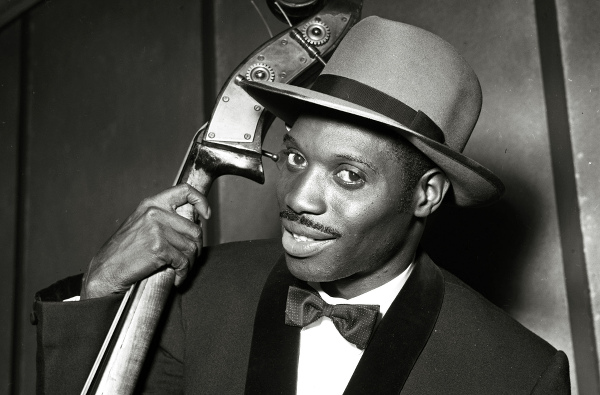“[…] Sparrow took command of a cultural realm that touched a particularly sensitive chord, allowing for the message to be conveyed with extraordinary directness and clarity; the entire country sang along… Musically, and in terms of the procedural norms of an art form peculiar to T&T, Jean and Dinah was also breaking with much of the established parameters regarding the way calypso was couched and delivered…”
The following is the second in contributor Owen Thompson’s four part series which pays tribute to More, Sparrow More! a classic album by calypso legend Slinger “Mighty Sparrow” Francisco:
A close look at the then existing reality can help us understand why Sparrow burst onto the calypso stage as he did, announcing to all that he was up for the challenge of being one of those trailblazers who have always emerged to make their voices heard when their society is faced with the threat of discord within.
Perhaps it was the comportment of the soldiers at the American military base in the western peninsula of Trinidad that stirred something in the breast of the then 20-year-old Francisco. Perhaps that something was a need to fight against the harsh, unjust, economically, politically and militarily atrocious impositions of the foreign forces, in a word, a desire for revolt. At other times in history, civilisations have sought recourse in mime, drum relay rapport, roving theatre or Neo-realist cinema.
In mid-20th century Trinidad and Tobago, young Francisco resolved to use calypso as his vehicle. His way of seizing the reins at the time (“The Yankees gone an’ Sparrow take over now”) marked the beginning of the bard’s take-over philosophy. Calypso became one of the first, most powerfully identifiable symbols of a drive for ownership of place and self. It was 1956 and other significant things were also taking place in other spheres.

Sparrow took command of a cultural realm that touched a particularly sensitive chord, allowing for the message to be conveyed with extraordinary directness and clarity; the entire country sang along. Jean and Dinah came to represent what it did and all the rest is already in the history books.
Musically, and in terms of the procedural norms of an art form peculiar to T&T, Jean and Dinah was also breaking with much of the established parameters regarding the way calypso was couched and delivered.
After dealing with the Yankees, in the years immediately following, the young Sparrow turned his attention to another area that required no less meaningful take-over: the long established socio-politico-economic-labour-institutional-racial dynamics that informed every facet of life in the nation.
From the late 1950s to the first years of the 1960s, he squared off against the badjohns and knife-toting street urchins who would not let peace-loving people be: “Gunslingers” (1959), “Royal Jail” (1961), “Renegades” (1962), “Hangman’s Cemetery” (1962), “No Bacchanal” (1962) and “Bull Pistle Gang” (1964).
He went hard at the inadequacies of political and labour leaders deemed not up to the task. He rebuked the absurd contradictions of inherited educational values foisted upon the culture, a consequence of the workings of the history of his space and place, laying bare the most grotesque incongruities. He rebuffed international leaders leading in the wrong direction, driven by ignoble political designs.

He also knew how to target the sempiternal dilemmas of the human condition, to which a small, two-island state bogged down in its own contradictions was not immune. Many of the major issues dealt with since the beginning of time by combative movers and shakers like Socrates and Aristotle and Shakespeare and Sartre are to be found in his work: greed, excessive ambition and the insatiable lust for power; solitude and alienation; man’s insistence on imposing his will on his fellow man, by whatever means necessary; the vagaries of love; the upsides and downsides of official, semi-official and/or unofficial conjugal encounter and mis-encounter and the angst spawned by who-are-we-where-do-we-come-from-and-where-are-we-going concerns.
Sparrow’s vehicle for giving voice to those ageless travails was an art form that was distinctly, whole-heartedly and unmistakeably Trinidadian, deriving from its cannes brûlées rootstock (calypso). Subsequent to his much-ballyhooed arrival with Jean and Dinah, Sparrow was playing a not insignificant role in driving it in a completely new direction.
In the 14 calypso seasons that separated Jean and Dinah and More Sparrow More!! there had been pinnacle points, works of genius, vintage releases on a yearly basis in batches of three and four. Along with a musical form in constant evolution, there was ever-increasing sophistication in terms of instrumental accompaniment led by Bert Inniss, Ed Watson, Joey Lewis, Sparrow’s Troubadours, etc.
The efforts made throughout that period had produced increasingly polished fruit, gradually improving the template. In the final year of the decade, the movement would culminate in an album that for the first time truly scaled musical Everest.

An impeccably rounded ensemble that transcended the habitual yearly yield of four or five vintage offerings with three or four add-ons perceptibly below the level of the rest. The 1969 opus offered flawless excellence, every one of its ten tracks, every musical note, every minimal departure within the euphonious whole in sync with the concerns audibly voiced by Sparrow’s lyrics.
Every one of the ten songs was, in addition to an exercise in lyrical and musical arrangement perfection, an education in itself. For the eager learner with his ear cocked, it was all there.
We were told about Martin Luther King’s assassination and what it boded for race relations, civil rights and the political dynamics in the United States of America.
We were permitted a no-holds-barred look at sub-cultural elements of T&T. “Okay, alright,/Johnny, legalise cockfight” alerted us to a hugely important “subversive” activity, as illegal as it was officially tolerated, as popular as it was economically lucrative.
In Bongo, we were exposed to a national art form, vibrant but largely looked down upon. It was being given space and validity by the King of Calypso, its music and its sounds required to say as much as the voiced lyrics, with descriptive and metaphorical force worthy of the best poets. Its extraordinary visual metaphors, the riveting step-by-step account of the bongo ceremony touched vital chords in our pre-pubescent souls.
Today, apart from being able to better grasp how such language and metaphor are worthy of the best poets, we are, more crucially, in a better position to appreciate the perfection with which it is all expressed and how remarkably rich it is in the grammar of Trinidad nation-language as opposed to “standard” English.

Who She Go Cry For brought us face-to-face with the perilous nature, in the realm of love and things of the heart, of third party invasiveness, false encounter and mis-encounter, a reality as old as the hills.
The Lizard opened our innocent eyes to the velveteen mysteries of the human anatomy and the weight of sensual and sexual suggestiveness. “Childfully,” we admired lyrics so masterfully crafted to suggest as much as was directly said as by what was deliberately left unsaid, meanings often enhanced by delightful musical sashays and the unmistakeably Sparrovian voice imprint.
“Wey de lizard,/Teacher Mildred?,” for instance, is followed by a loud two-line piano solo as eloquent as any of the words sung at any point of the song.
We were awakened to the reality of the Caribbean diaspora in “Labour Day in Brooklyn.”
We were pushed by Sparrow Dead towards grappling with the harrowing question of mortality. Making fun of his own death, Sparrow was doing more than taking a fleeting, casual glance at his status as uncontested King of Calypso, unmatched and indestructible, proudly strutting across a stage that was now his.
His manner of affirming to all that “There is no easy getting rid of me” drove us to reflect about the honest or not-so-honest way in which many of us, deep down, choose to look at who and what we really are. How far are we prepared to go, he forces us to ask ourselves, in the pursuit of our most cherished goals, uneasy in the knowledge that so many around us would dearly love to see our efforts thwarted.

Sparrow paints for us a motley handful of endearing nation types, sympathetically drawing the trio of gossip-mongers, “Big mouth Lillian,” “She pickyhead cousin” and “Big belly Angie,” who are charged with the task of boisterously publicising the supposed passing of the King.
But it is arguably with Sa Sa Ay in which Sparrow unapologetically presents the macho Trini male bent on female conquest, confident that his position of economic and territorial advantage justifies the haughty disdain he displays for the hapless Martinican who arrives in Trinidad to “play mas with George Bailey” but who “eh ha no money at all.”
Conservative parents across the Caribbean must have had nightmares about Sa Sa Ay being played on the radio; it is, one imagines, a song they deemed unequivocally offensive, made all the more so by the masterful manner in which Sparrow, with Trinidadian brashness and matter-of-factness, gives the lie to the old adage about money not being able to buy “love.”
It was full 13 years since Jean and Dinah were roaming the streets but, although she is not “round de corner posing,” this Martinican mademoiselle is essentially in the same business.
Editor’s Note: Click HERE to read part one of contributor Owen Thompson’s four part series which pays tribute to More, Sparrow More! a classic album by calypso legend Slinger “Mighty Sparrow” Francisco.
Owen Thompson, cricket and calypso lover and Atlético de Madrid fan, was born in Tobago, went to school in Trinidad, worked in Portugal, lived for decades in France and Spain and travelled widely in Europe, making him a writer with a world view.
 Wired868 Wired868 for smart sport news and opinion
Wired868 Wired868 for smart sport news and opinion






